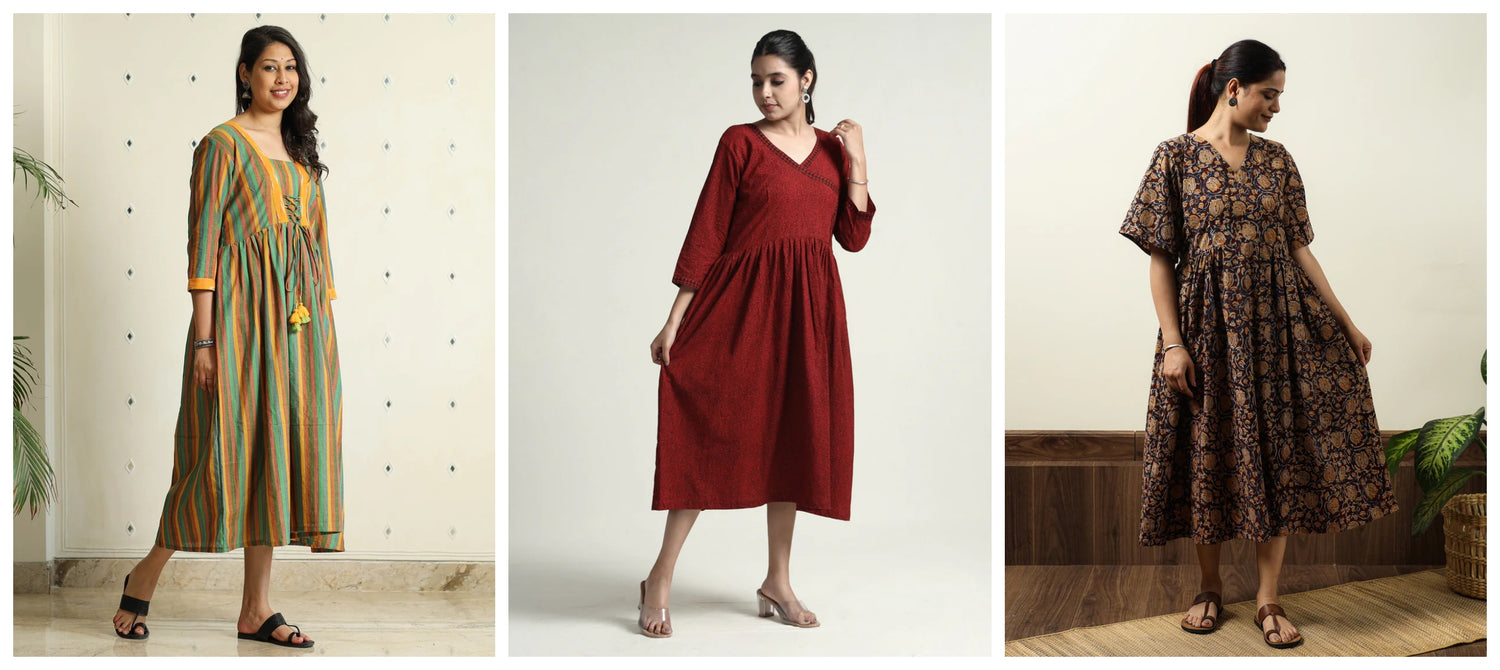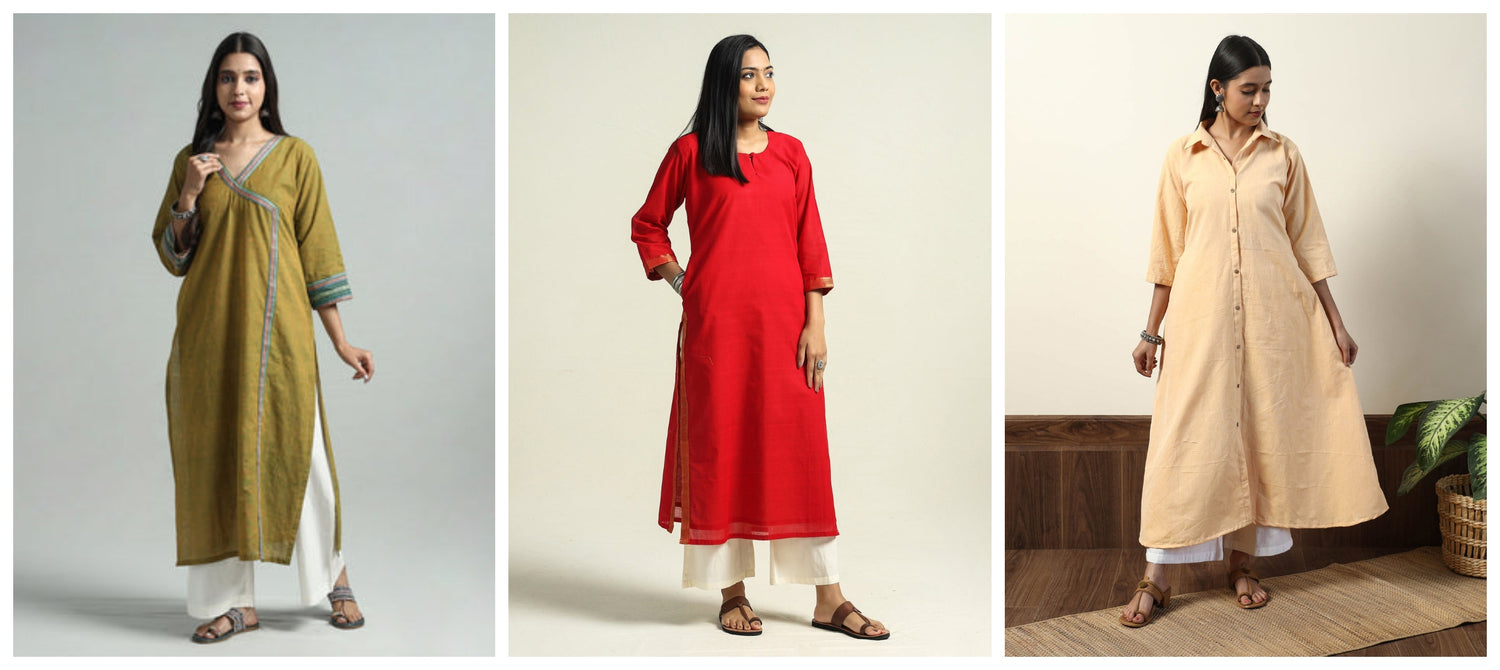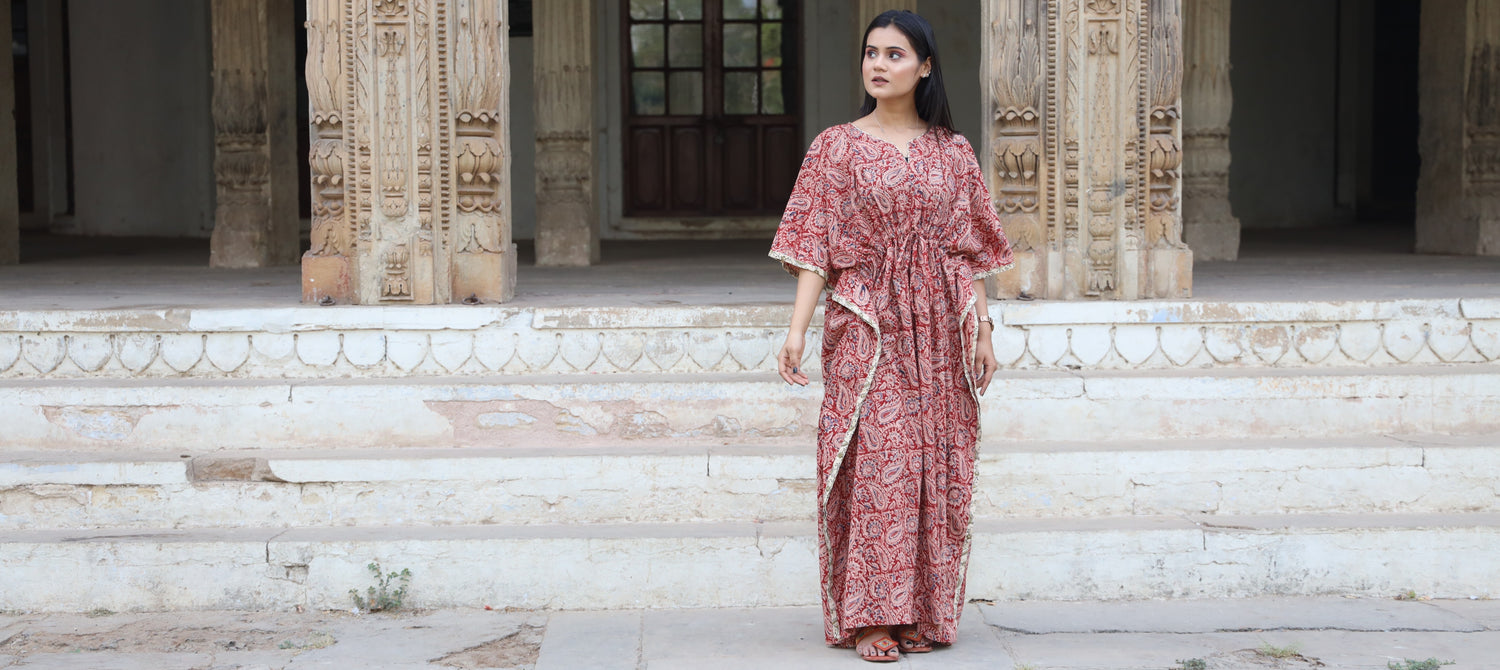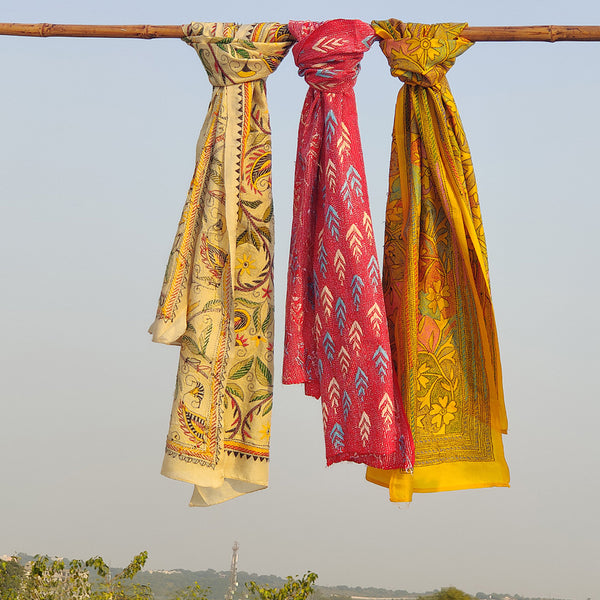Chikankari Embroidery, one of its unique forms of hand embroidery from Lucknow, requires a variety of stitching techniques that are learned over the course of many years of rigorous labour. Techniques like Chikankari or chikan embroidery demand focus and discipline throughout execution.
There are 32 different Chikankari embroidery stitches. The five fundamental Chikankari stitches that are often used are Phanda, Jaali, Tepchi, Murri, and Bakhia.
Chikankari Embroidery
Chikankari embroidery is a traditional embroidery style that originated under the Mughals in the 16th and 17th Centuries. It is believed Mughal emperor Jahangir’s wife Mehrunisa, also known as Noor Jahan brought this intricate art to India. Today Lucknow, Uttar Pradesh in North India is known as the Chikankari capital. Chikankari craft is known for its delicate and intricate handwork, which involves creating patterns on lightweight fabrics like muslin, cotton, chiffon, and silk.
Different Types of Chikankari Embroidery
Lucknow Chikankari Embroidery is a labour-intensive craft that requires great skill and precision. It is typically done by hand with a needle and thread. The Lucknow chikan embroidery process involves creating the outline of the design using the backstitch and then filling it in with various stitches to give it texture and depth.
The different types of Chikankari embroidery that are often used are Phanda, Jaali, Tepchi, Murri, and Bakhia.
Phanda
Phanda is a small, circular-shaped stitch commonly used in Chikankari work. It is created by making tiny, evenly spaced knots on the fabric, forming raised dots. Phanda stitches are often used to fill spaces within larger motifs.
 (image credit:- D'source)
(image credit:- D'source)Jaali
Jaali, also known as network, involves creating a delicate lattice or net-like pattern. The fabric is carefully cut, and threads are drawn out to form a grid-like structure. The threads are then embroidered with fine stitches to create intricate designs.
 (image credit:- D'source)
(image credit:- D'source)Tepchi Chikankari
Tepchi is a running stitch and one of the basic stitches in Chikankari work. It is created by passing the needle and thread through the fabric in a straight line. Tepchi stitches are used for outlining motifs, creating borders, or filling in areas with parallel lines.
Murri
Murri work adds texture and dimension to Chikankari embroidery. It involves creating tiny knots or beads with a needle and thread. Murri stitches are used to form raised dots or motifs on the fabric, adding a decorative element to the design.
 (image credit:- D'source)
(image credit:- D'source)
Bakhia
Bakhia stitch is a flat stitch used in Chikankari embroidery. It is created by making diagonal or slanted stitches on the fabric, usually in a crisscross pattern. Bakhia stitch is used to fill spaces within larger designs or to create geometric patterns.

Conclusion
Chikankari embroidery is used in various ways to create intricate and beautiful designs. Skilled artisans employ their expertise to create a wide range of patterns and motifs using these stitches.
FAQs on Chikankari Embroidery
What is the Chikankari method of embroidery?
The word "Chikankari" originates from "Chakin," a word in Persian meaning "embroidery." The art form has a rich history and is believed to have been introduced in Lucknow by the Mughals in the 18th century.
What are the types of embroidery in Lucknow?
The different types of embroidery in Lucknow are Zardozi, Kamdani, Aari, Sozni, and Chikankari Embroidery.
Which embroidery stitches produce an embossed effect in Chikankari?
In Chikankari embroidery, there are certain stitches that are used to create an embossed or raised effect on the fabric. These stitches include Murri, Bakhiya, and Phanda.
How many Chikankari embroidery stitches are there?
There are 32 different stitches of Chikankari embroidery. Though all but one of them share characteristics with different types of needlework, one can broadly divide them into six major groupings.
Which are the popular Chikankari embroidery stitches?
In Chikankari embroidery, several stitches are popular and commonly used to create intricate and beautiful designs. However, some of the popular Chikankari embroidery stitches are Phanda, Jaali, Tepchi, Murri, and Bakhia.











Leave a comment (all fields required)